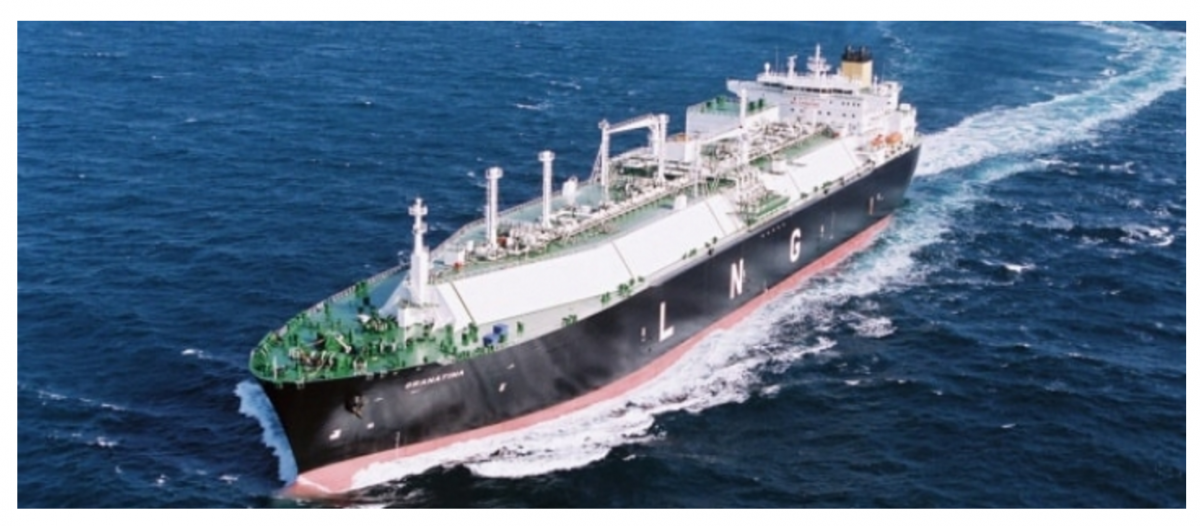Courtesy of Nick Cunningham, OilPrice.com

The global market for LNG is changing quickly, spurred on by new sources of supply from U.S. shale.
U.S. natural gas production surged over the past decade, as fracking opened up a wave of new gas supply. That wave led to a glut and a crash in prices long before shale drillers did the same for oil. The U.S. was sitting on massive volumes of gas that routinely traded as low as $2 or $3 per million BTU (MMMBtu).
At the same time, Asian consumers – mainly Japan, South Korea and increasingly China – paid a hefty premium to import gas, with prices spiking close to $20/MMBtu following the Fukushima meltdown in 2011 that left Japan painfully short of functioning electricity capacity.
That presented U.S. gas companies with a straightforward arbitrage opportunity – export cheap American gas to Asia, selling it for a much higher price. The race to build LNG export terminals was on.
But by the time the first LNG export terminal in the U.S. came online in 2016, the gas market was radically changed. On the demand side, Japan – the largest LNG importer in the world – was no longer desperate for gas imports in the same way that it was back in 2011 and 2012. New renewable energy, a monumental efficiency campaign, and a greater reliance on coal cut into gas demand. China’s gas demand has also grown slower than expected.
The effects on the supply side of the equation are arguably much more significant. LNG export capacity around the world has surged in recent years, hitting 340 million tonnes per annum (mtpa) in 2016, up from 278.7 mtpa at the end of 2011, an increase of 20 percent. New megaprojects have come online, including Chevron’s Gorgon LNG project in Australia. A whopping 879 mtpa of new export capacity has been proposed for the future, although much of that probably won’t be constructed now that the market is oversupplied.
Surging supply and disappointing demand caused prices to come down from their peaks. Spot prices in East Asia – the Platts JKM marker – hit $19.42/MMBtu in March 2014. By 2016, Japan only paid an average of $7/MMBtu for imported LNG, or around one-third of the prices from three years ago. Spot prices for May 2017 delivery are now trading below $6/MMBtu.
The glut of LNG today is upending long-standing trade practices. LNG has historically been traded on long-term contracts at prices linked to the price of crude oil. The volume of LNG traded had once been limited, so there wasn’t much of a true market price for the product. Fixing cargoes to the price of crude oil became a common practice. The crash of crude oil in 2014, not coincidentally, also helped push down the prices of LNG.
Now, with so much supply on hand, the market is no longer favorable to sellers. But the U.S. is just beginning to ramp up. Cheniere Energy brought the first LNG export terminal online last year on the Gulf Coast. Other projects are under construction and by the end of the decade, the U.S. could be the third largest LNG exporter in the world behind only Australia and Qatar. By 2035, the U.S. is expected to pass them to become the largest LNG exporter in the world.
“As U.S. exports ramp up, we’re going to see even more flexibility with more people trying to buy and trade volumes. The old models of stable long-term contracts will really have to change,” Zhi Xin Chong, a gas analyst for Wood Mackenzie Ltd., told Bloomberg. “We’ve already seen the impact of U.S. LNG on contract trends, with more destination flexibility coming into play.”
Contracts used to not only have long time horizons, but would also prohibit buyers from reselling cargoes, limiting the development of a true market for LNG. That is changing, and the more reselling and spot purchases, the more liquid (no pun intended) the market will become.
But just because new U.S. suppliers are adding competition does not mean that American LNG is the most competitive. At one point it was – cheap Henry Hub prices competed favorably to high-priced LNG in Asia, particularly when oil traded at $100 per barrel. But spot LNG prices in Asia are now lower than some of the American LNG contracts.
For example, Indonesia’s Pertamina is contracted to buy LNG from Cheniere Energy at Henry Hub prices, plus 15 percent, plus a fixed $3.50/MMBtu fee, according to Bloomberg. When the deal was negotiated in 2013, that equated to something like $8/MMBtu – much better than the $18/MMBtu that LNG traded at the time. However, with spot prices down below $6/MMBtu, Pertamina is now trying to get out of its contract.
Buyers are demanding that these age-old contract practices be scrapped. JERA Co., a partnership between Japanese utilities Chubu Electric Power and Tokyo Electric Power, is the world’s largest buyer of LNG. JERA formed a common front with Korea Gas Corp. and China National Offshore Oil Corp to establish a buyer’s club in March to force changes in the LNG market. It is sort of the opposite of OPEC – a buyer’s cartel meant to influence prices and dictate contract terms. JERA is expected to sign a deal with France’s Total, which would see flexible volumes delivered based on spot prices.
But fixed prices and multi-year contracts are not going away entirely – they may just be shifting to lower prices and shorter terms. The former head of Cheniere Energy, Charif Souki, recently offered Japanese customers five-year contracts fixed at $8/MMBtu from an LNG export terminal on the U.S. Gulf Coast beginning in 2023, a contract much shorter than in yester-year when they spanned decades. Now head Inc., Souki is confident his capacity will sell out.




